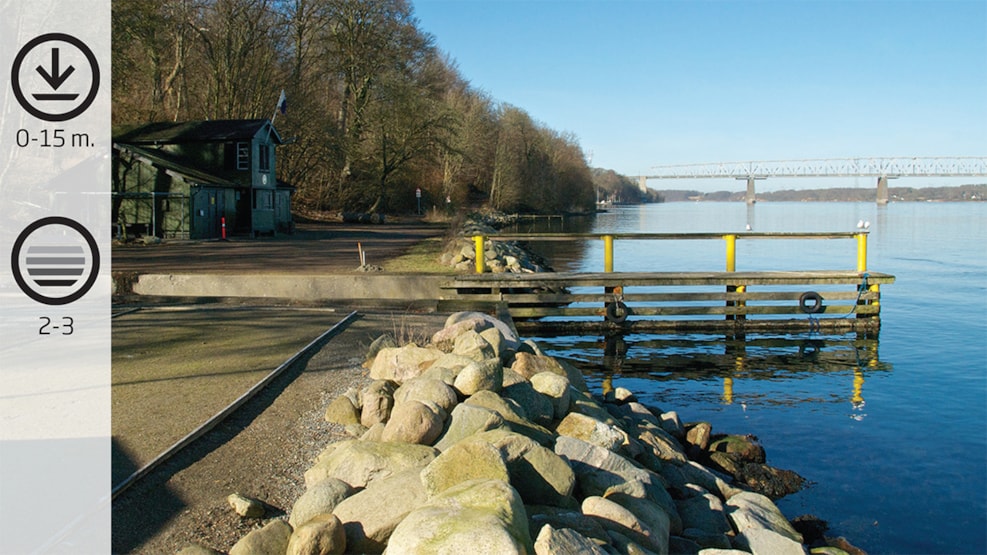
Diving club Marsvinet
Rolling seabed, easily accessible – sometimes strong tide. Different kinds of crabs. Lots of sea life close to the beach. Large species of brown algae further out.
Facts:
How to find: Coming from E 20 choose Exit 58. Follow the signs towards “Centrum” and “Kulturøen” in Middelfart. Reaching Kulturøen, continue at Havnegade towards the fish shop, the old shipyard and the two black dinghy houses. Then you reach Dykkerklubben Marsvinet.
Geocoordinates:
Longtitude: 9.7216373701
Latitude: 55.508490987
Google Earth Coordinates:
Bredegrad: 55°30'29.97"N
Længdegrad: 9°43'22.28"Ø
Getting in and up the water: You can get in right outside the diving society
Highlights: The large rocks and the life surrounding those rocks
Air filling: You can get your airbottle refilled at Hindsgavl Camping in Middelfart (open all year round) during opening times: Hindsgavl Camping. Alternatively ask at the local diving club in Middelfart, Tel.: +45 3311 1323, Dykkerklubben Marsvinet
Best season: All year round
Dangerous areas: Avoid venturing out into the Belt and please mark visibly with A-flags. Sailing close to the coast during all seasons
Depth: 0-15 m.
Tide: Can be strong
Level of difficulty (1-5): 2-3
Permissions: None
Facilities: parking space
Photo opportunities: Good opportunity for macro
Dykkerklubben
Dykkerklubben Marsvinet (Diving club) in Middelfart is ideally situated for a diving society: diving at the doorstep – close to Snævringen in Lillebælt. You can park your car only 2 metres from the water’s edge, and as soon as you go beneath the surface, the depth increases a couple of metres.
Already here, close to the edge, you will find plenty of sea life. You will meet larger rocks with brown algae in the shape of toothed wrack and bladder wrack, and especially during the summer months, plenty of crabs. Beach crabs can be found everywhere in Danish territory, and they are an animal, the divers can get very close up against and be watching for a long period.
If you swim further out, you find a diverse seabed with large specimens of both sugarkelp and laminaria hyperborea. These seaweeds attach themselves onto the large rocks found here. It is in-between these seaweeds you can experience the goldsinny, which find both food and shelter from enemies inside the seaweed.
You will on this dive pass areas with gravel which keep hold of the various flatfish. Especially flounder and plaice can see on the dive. But also many species associated with reefs can be seen here. The seabed falls and rises between 6 and 9 metres and you therefore need a compass to know in which direction the landside can be found. A compass is a must when diving on this site. This apply to all dives in Snævringen
A good dive plan could be to plan the dive by a triangle course. The compass must be used frequently and timing as well, but then you also get a surprisingly good dive where you meet plenty of interesting life below the surface.
You have a good chance to see seals and porpoises from the landside.